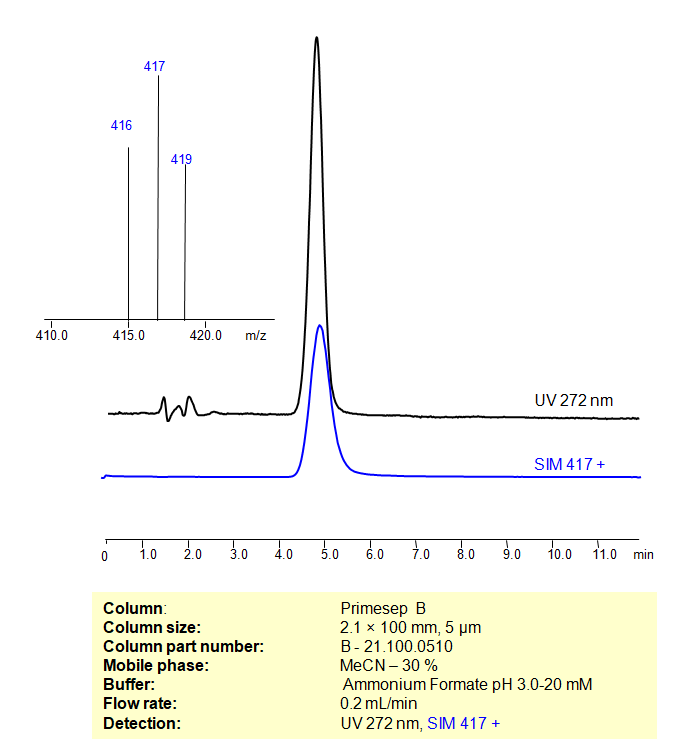HPLC Method for Analysis of Miconazole on Primesep B by SIELC Technologies
High Performance Liquid Chromatography (HPLC) Method for Analysis of Miconazole
Miconazole is an antifungal medication commonly used to treat fungal infections. Here are some key points about miconazole:
Usage: It’s most often used to treat skin and mucous membrane infections such as vaginal yeast infections, oral thrush, athlete’s foot, jock itch, and ringworm.
Mechanism of Action: Miconazole works by inhibiting the synthesis of ergosterol, an essential component of fungal cell membranes. This disruption leads to alterations in the membrane’s permeability and eventually results in fungal cell death.
Formulations: Miconazole is available in various formulations, including creams, powders, sprays, and suppositories.
Topical Cream: Applied to the skin to treat conditions like athlete’s foot, ringworm, and jock itch.
Vaginal Suppositories and Cream: Used for vaginal yeast infections.
Oral Gel: Used for oral thrush (a fungal infection in the mouth).
Miconazole can be retained, and analyzed on a Primesep B mixed-mode stationary phase column using an isocratic analytical method with a simple mobile phase of water, Acetonitrile (MeCN), and a ammonium format as a buffer. This analysis method can be detected using UV at 272 nm, an Evaporative Light Scattering Detector (ELSD), or any other evaporative detection method (CAD, ESI-MS)
| Column | Primesep B, 2.1 x 100 mm, 5 µm, 100 A |
| Mobile Phase | MeCN – 30%, |
| Buffer | Ammonium Formate pH 3.0-20 mM |
| Flow Rate | 0.2 ml/min |
| Detection | UV, 272 nm, SIM 417 + |
| Class of Compounds | Allylamines |
| Analyzing Compounds | Miconazole |
Application Column
Primesep B
Column Diameter: 2.1 mm
Column Length: 100 mm
Particle Size: 5 µm
Pore Size: 100 A






